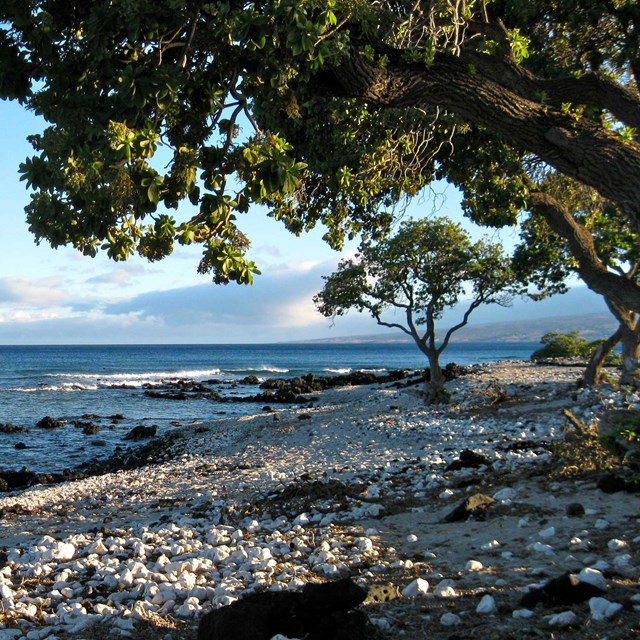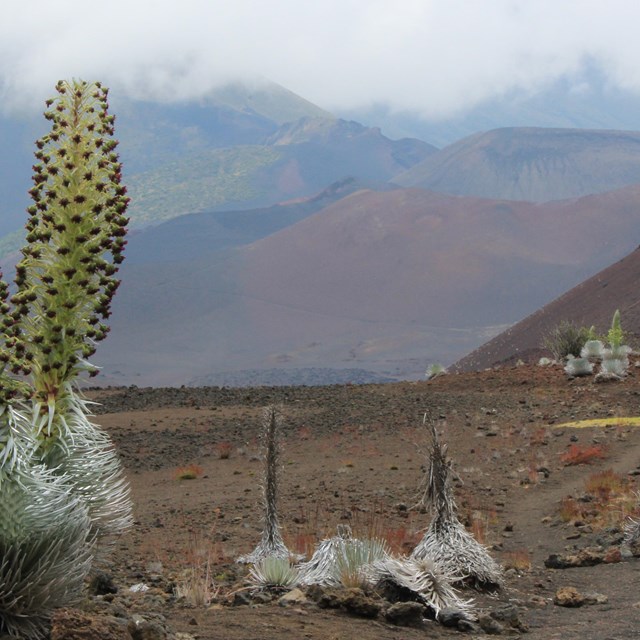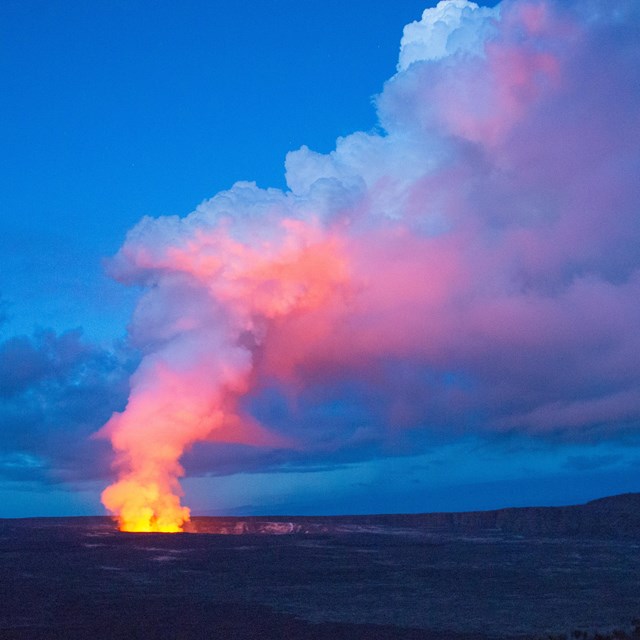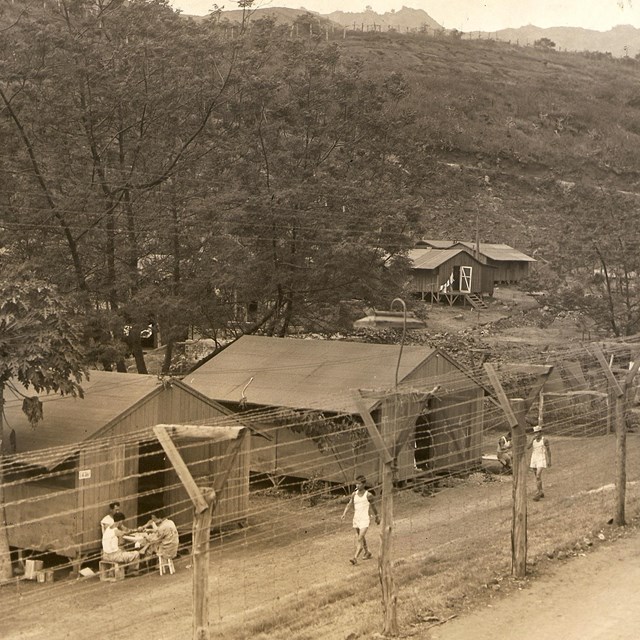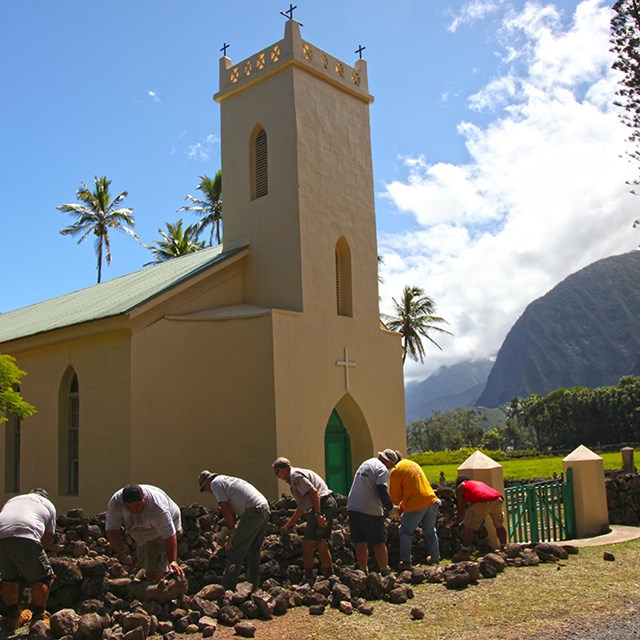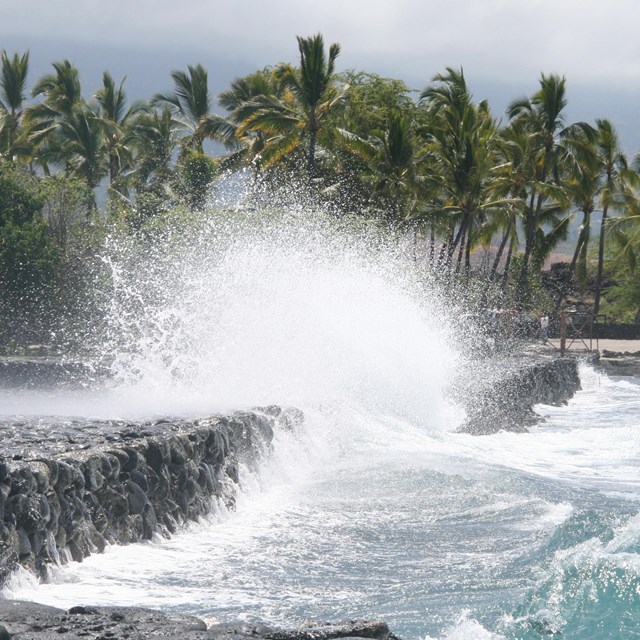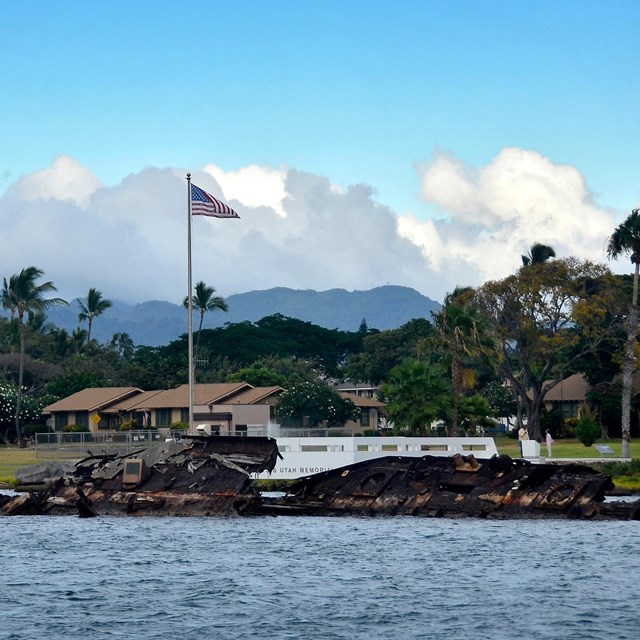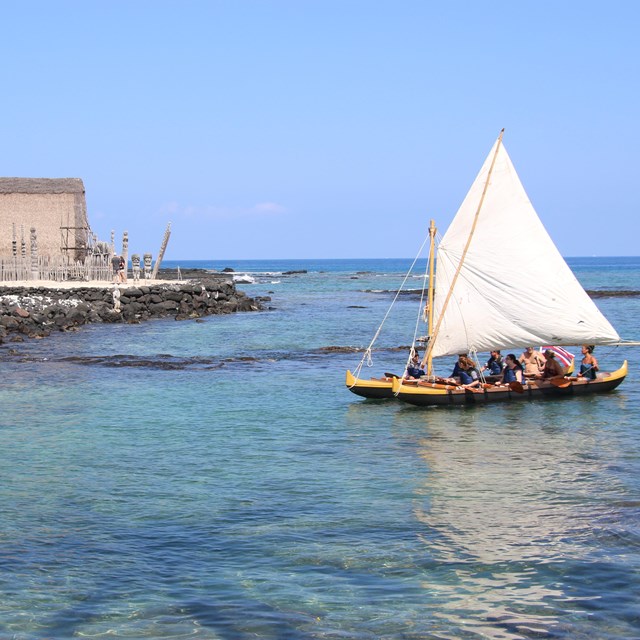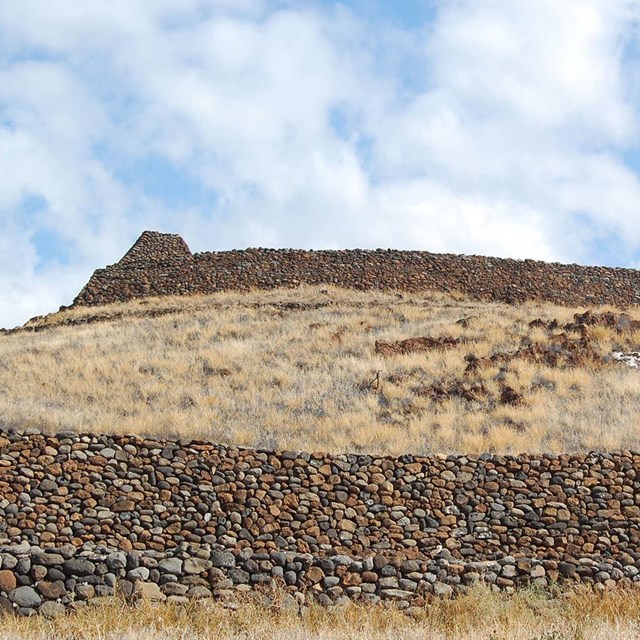National Parks of Hawai'i
Plan a Visit to Hawai'i
Whether you're visiting one island or many, taking a little extra time to plan your trip to the national parks in Hawai'i is a good idea. Check out our pages on The Island of Hawai'i, Maui, Moloka'i, and O'ahu to see which parks are found on which islands. Then visit the Plan Your Visit pages for each of the parks to learn more about visiting each park.
Here are a few tips for traveling to the national parks of Hawai'i.
Travel Tips
-
Tip #1: Pay Attention To The Weather: If you're planning on visiting one of the state's many resorts and spending your days on our beautiful white sand beaches, you may be able to only pack flip-flops and tank tops. However, a visit to the summit of Haleakala National Park on Maui can mean frigid temperatures and howling, wet winds. A visit to Pearl Harbor National Memorial can be canceled by high winds. Other parks on the ocean can see rain and wet winds come in from the coast.
-
Tip #2: Know Your Wet Side From Your Dry Side: Most of the Hawaiian Islands have a dry side with mostly arid conditions and a wet side with tropical, rainy conditions. This is because Hawaiian weather is dominated by the trade winds. These winds bring cool, moist weather from the northern Pacific Ocean to the eastern and northern (i.e., wet sides) of the islands. When these winds hit the peaky Hawaiian topography, clouds form, and rain results. We have this rain to thank for our beautiful tropical forests, but if you are planning a visit to these areas, be ready for rain. Conversely, as much of this rain falls before ever making it to the western and southern sides of the islands (i.e., dry sides), these places are typically dry. While dry conditions may make for great beach weather, it often means that water is scarce, the sun is hot, and tree cover is limited. Know before you go!
-
Tip #3: Island Hopping Requires Extra Planning: If you're planning on going to multiple islands during your visit to national parks in Hawai'i, please note that there are no ferries between the islands. You must fly. This requires a lot of preplanning in regards to packing and vehicles. Plan ahead to island hop smoothly.
-
Tip #4: Understand How Flash Floods Work: A visit to Hawai'i wouldn't be complete without a visit to our beautiful waterfalls. If you don't want a waterfall to be the last waterfall you ever visit, learn about flash flooding. Flash floods occur when rain in the upcountry (higher elevation) falls in heavy amounts and makes its way down in tremendous volumes. Flash floods happen quickly, and they are dangerous. It may be sunny where you are, but upcountry rains can cause flash floods. Speak with the park rangers at the visitor center of whichever park you are visiting to find out the daily flash flood threat. Obey all posted signs in NPS sites and remember to selfie safely.
-
Tip #5: Remember Your Essentials—Clothing, Water, Shelter: Many of our national parks in Hawai'i are in remote locations. Weather is changeable, and sometimes freshwater is scarce. Consult the park's Plan Your Visit pages before you go.
A Visitor Code of Ethics
A visit to Hawai'i national parks is an incredible experience. The places and culture of Hawai'i come alive before your eyes and can leave you forever changed. Hawai'i receives more than 9 million visitors a year. That is almost nine times the number of people that actually live in the state of Hawai'i. On the one hand, this means that most Hawai'i residents are very accustomed to travelers. On the other hand, it can also lead to confusion as to what is proper conduct in local culture. Here are a few simple guidelines to help make your visit to Hawai'i a non-intrusive one.
-
Conscientious Tourist Tip #1: Go Light On the Land: Hawai'i is a chain of islands 2,400 miles from the nearest mainland. Resources, including freshwater, are scarce. While here, do what you can to reduce water use and not generate additional amounts of waste, particularly plastic. Please follow all posted signs on the island for rubbish (trash/garbage) disposal and recycling.
-
Conscientious Tourist Tip #2: It's Not All a National Park: Though much of Hawai'i is stunningly beautiful, take note of whether you are in a National Park Service site such as a national park, historic site, historical park, or memorial; a state or local park; or private tourist area such as a resort or education center. Taking a moment to understand where you are can help you know if it's proper conduct to approach someone you may think is a Native Hawaiian to learn about their culture or heritage. What you think may be an open ceremony for tourist or education purposes may in fact be a private family or community moment upon which you have intruded. National Park Service sites are here for preservation, education, and customer service to answer your questions, but not all of Hawai'i is a national park.
-
Conscientious Tourist Tip #3: Seek First to Understand: We highly recommend that tourists understand a bit about Hawaiian history before their visit and before exploring the many cultural sites in Hawai'i. Hawai'i was a sovereign nation with centuries of its own traditions and cultures prior to European contact. Understanding this history can help us all better understand Hawai'i today.
-
Conscientious Tourist Tip #4: Take Only Memories and Leave Only Footprints: A good rule of thumb wherever you travel, this Leave No Trace ethic is especially true in Hawai'i. With 9 million tourists, small actions add up to huge impacts. Taking rocks or other natural "souvenirs" home with you is strictly prohibited anywhere in the islands. Please refrain from stacking rocks or otherwise leaving your "mark" on the land. Follow signs when driving your vehicle or hiking in remote places to avoid leaving an impact on fragile ecosystems.
Last updated: November 25, 2022

